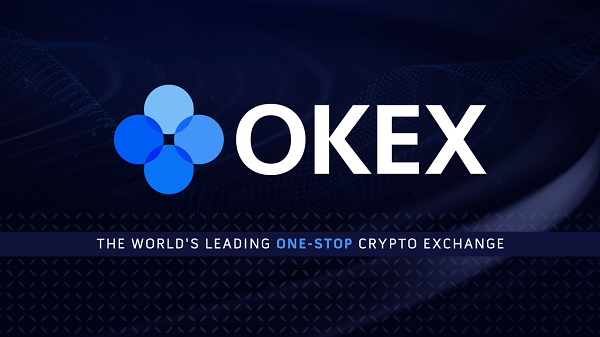
Dive into the world of tech employment with insights from Lucia Nash and Anuj Namdev. In this article, we expand on their vibrant talk from the “The Talk” podcast, tackling the twists and turns of today’s job market—from the surge of over-employment to the nuances of remote work culture.
Discover actionable insights on how to navigate the changing tides of tech careers, all while finding that sweet spot between professional growth and personal well-being. Get set for a concise journey through the now and the next of tech employment.
The Phenomenon of Over-Employment
Once upon a time, having one job was the standard. Now, enter the age of over-employment, a trend where tech whizzes aren’t just juggling lines of code, they’re juggling jobs. Over-employment is when professionals, often in the tech industry, take on multiple full-time positions simultaneously. It’s not moonlighting or a side hustle – it’s full-time, all the time, times two (or more).
Why is this happening? The tech world moves fast, and opportunities abound. During the pandemic, the work-from-home model didn’t just open doors; it knocked them off their hinges. Techies realized they could work for a Silicon Valley start-up at 9 AM and log into an East Coast firm’s server by noon. The digital workplace has no walls, and the tech-savvy are hopping from one virtual cubicle to another with a click.
Financial and Work-Life Balance Implications
Let’s talk cash and couches. On the surface, over-employment can seem like a financial buffet: more jobs, more money. And in a world where tech gadgets cost a pretty penny, who wouldn’t want an extra paycheck (or three)?
But there’s a flip side. Imagine trying to balance two demanding tech jobs. Your phone buzzes with Slack alerts like it’s the Fourth of July, and your calendar looks like a game of Tetris. The mental load can be immense, and ‘me time’ may become a myth. Work-life balance in the over-employment world isn’t just about finding time for a weekend Netflix binge; it’s about keeping burnout at bay and remembering that you’re a human, not a machine.
Sure, the bank account might smile, but can the same be said for those caught in the over-employment loop? It’s the ultimate test of what matters more: the size of your wallet or the breadth of your sanity.
The Gig Economy and Freelancing Vs. Full-Time Employment
When the world hit the pause button during the pandemic, something curious happened in the job market: the gig economy exploded like a pop star’s first hit single. What’s the gig economy, you ask? It’s a world where short-term jobs, freelance gigs, and contract work rule. Think of it as dating jobs—no long-term commitments, just a series of “seeing how it goes.”
And go it did, skyrocketing in the tech world where projects can be as short as a TikTok video. Post-pandemic, folks started to question the old 9-to-5 ball and chain. Why sit in one office when you can be a digital nomad, working from a beach in Bali one week and a café in Paris the next?
Transparency and Expectations in Freelance Work Vs. Full-Time Employment
Here’s where freelance and full-time work really start to differ: honesty about what you’re signing up for. Freelancers are the open books of the working world. They know the deal—finish the project, get paid, and move on. There’s little pretense of a “forever home” in a company, and expectations are as clear as a cloudless sky.
Full-time employment, on the other hand, can sometimes feel like a mystery novel. Job descriptions can be as long and complex as a Russian novel, with actual duties revealed only after you’ve signed on the dotted line. It’s not always the case, but the surprises can range from an unexpected office culture to tasks that weren’t in the job ad.
The Return to Office Debate
Imagine this: It’s Monday morning. Where would you rather be? Sipping coffee at your kitchen table as you log in to work, or rushing out the door to beat traffic on your way to the office? The return-to-office debate is stirring up more buzz than the office coffee machine ever did.
For some, the office is a stage for collaboration, a hub of face-to-face brainstorming where ideas bounce around like lottery balls. Then there are those who argue that home is where the heart (and productivity) is, claiming that their couch is their cube and pajamas are the new power suit.
Why Companies Want Employees Back in the Office
So, why are companies waving the ‘Return to Office’ banner? Some CEOs say it’s about teamwork and culture, about sharing a vision and a pizza during lunch breaks. They envision an office vibe where creativity flows in casual chats by the water cooler. They see it as a trust thing—seeing is believing, and they believe in seeing their teams at their desks.
But what’s the real tea from the employee side of the desk? Workers have had a taste of remote life, and many aren’t ready to give up the recipe. They’ve traded commute times for family time, office chairs for porch swings. They’re asking, “If I’m hitting my targets, does it matter where my laptop is?”
The return to office isn’t just a logistics issue—it’s a battle of beliefs, a tug-of-war between tradition and transformation. As we peel back the layers, it’s clear that there’s more at stake than just where we work—it’s about how we work best.
The Culture Beyond Perks
Beyond Pizza Parties: What Is Company Culture Really About?
So, your company offers pizza parties on Fridays and has a foosball table in the break room. Cool, but let’s cut through the cheese and crust to see what’s really underneath. Company culture isn’t about the occasional free lunch or quirky office decor. It’s the values, beliefs, and behaviors that are baked into the everyday life of a company. It’s how a team member feels about logging into their computer every day, not just the toppings that come with the job.
Real culture seeps into every email, meeting, and project—it’s in the way a company celebrates wins and learns from losses. It’s about whether your boss treats you like a cog in a machine or recognizes you as a human being with ideas, a life outside work, and maybe a dog that sometimes barks during calls.
Day-to-Day Actions and Management Style: The Yeast That Makes Company Culture Rise
Think about your favorite manager or mentor. Chances are, they didn’t make the list because they approved a budget for doughnuts. It was probably their daily actions, the way they managed with empathy, encouraged innovation, and communicated openly. Maybe they made sure your voice was heard in meetings, or they were there with guidance when you felt more lost than an umbrella in a windstorm.
Culture is communicated in the “please” and “thank you” of emails, the flexibility when life throws a wrench in your schedule, and the transparency when big company changes are looming. It’s the leadership style that promotes growth, not just grinding out work.
The Importance of Hiring Right
Mastering the Art of Headhunting
Hiring is not unlike fishing—you need the right bait, a good spot, and plenty of patience. Headhunting, however, is more like spearfishing; you need to be precise and know exactly who you’re looking for. In the teeming waters of the tech talent pool, headhunters don’t cast wide nets. They use the spear of their expertise to target the candidates that not only have the skills but will also vibe with the company’s culture and pace.
Transparency here is the name of the game. Clear communication about what the job entails, the growth prospects, and the actual day-to-day duties can mean the difference between a catch and a candidate swimming away. There’s little room for “bait and switch” tactics in a world where LinkedIn profiles are the new resumes, and company reputations are openly discussed on platforms like Glassdoor.
Specialists Vs. Generalists in an AI World
In the tech universe, there’s an ongoing debate simmering like a slow-cooked stew: should companies hunt for the unicorn specialists who can do that one magic trick nobody else can, or should they look for Swiss Army knife generalists who can adapt to any situation?
With AI looming on the horizon like a new dawn, specialists might seem like an endangered species. After all, if a machine can learn to do one thing incredibly well, where does that leave the human specialist? But remember, someone needs to teach, tweak, and troubleshoot that AI. That’s where specialists still shine.
Generalists, on the other hand, have their fingers in many pies—jack of all trades, master of some. They bring flexibility and a wide skill set that’s invaluable, especially in startups where everyone wears multiple hats. As AI takes over more specialized tasks, these adaptable souls could be the ones steering the ship through uncharted waters.
A Future Vision of Employment
When Employees Set the Stage
Picture a world where the job market flips upside down—a place where employees post their resumes and companies line up to bid for their attention. It sounds like a career fairytale, but could it be the job market of tomorrow? With skill shortages in tech and the rise of personal branding, the power dynamic is already shifting. Talented professionals are becoming the prize, not the pursuer.
In this potential future, an employee’s online profile might work like a storefront, showcasing their skills, projects, and endorsements. Companies, in turn, might pitch their culture, growth opportunities, and benefits to woo their ideal candidate. Think of it as a matchmaking service where both sides are trying to find ‘the one.’
“Ear might take over might, but there will always be a need for a person who will have to direct the AI.”
The future of work isn’t just about chasing the highest salary or landing the flashiest title. It’s about meaningful engagement, where innovation and well-being walk hand in hand. As Lucia and Anuj have illuminated, the shape of this future is still in our hands, malleable and ready to be defined by our choices and voices.
We’ve journeyed through the dynamics of over-employment, the balance of gig versus full-time roles, and the tug-of-war between office-centric and remote work cultures. What emerges is a clear vision that the workforce of tomorrow demands adaptability, values-driven cultures, and, above all, a human touch amidst the rise of automation.
As you step back into your own work reality, remember the power of transparency, the strength of culture, and the significance of personal growth. These are the pillars that will hold up the workplace of the future—a future that, according to our experts, is as exciting as it is within reach.
For more insights on mastering the art of communication, be sure to view the full conversation with Lucia Nash & Anuj Namdev on the Usi “The Talk” @Beincrypto podcast. It’s an investment in your personal and professional growth that promises invaluable returns.
Written By : Daniel Jacob
Disclaimer
In compliance with the Trust Project guidelines, this opinion article presents the author’s perspective and may not necessarily reflect the views of BeInCrypto. BeInCrypto remains committed to transparent reporting and upholding the highest standards of journalism. Readers are advised to verify information independently and consult with a professional before making decisions based on this content.






Be the first to comment